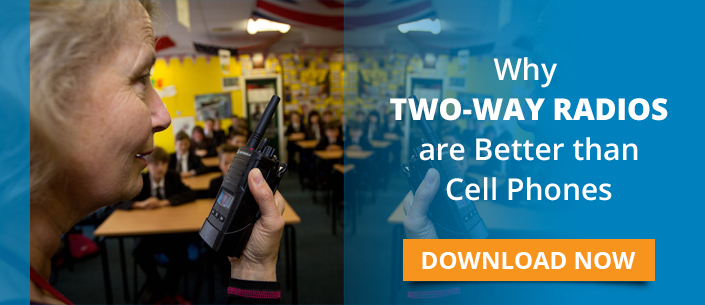Students heading off to college in the fall expect to be safe as they settle into their dorms and navigate their way through new campuses. With that expectation comes a need for colleges and universities to continually improve tactics for campus communucation, security and emergency response to ensure students remain safe during day-to-day activities, sporting events, and other school functions.
One way to ramp up campus security is by bolstering radio communications with two-way radios. Unlike a broadcast receiver that only receives content, a two-way radio can both transmit and receive. A two-way radio also allows the operator to have a conversation with other similar radios operating on the same radio frequency or channel.
Here are top-level ways this investment can enhance student and staff safety.
- Instant communication: Using two-way radios, teachers and administrative staff can quickly alert a safety or security team, or coordinate a campus lock down or natural disaster response. Two-way radio systems allow users to directly communicate with response teams, shortening response times for police, fire, and EMS.
- Reach and reliability: Two-way radios work independently of landline and cellular networks. They can transmit signals through coverage gaps and dead spots, and also through physical obstacles like trees and hills, and inside underground tunnels and basements. Messages are clear and easy to hear, alleviating confusion that can hinder communication. When communication must be silent, the radios allow for a texting option to send messages discretely.
- Traceability: Two-way radios allow for the tracking of campus shuttle buses, security personnel, and school vehicles in case of emergencies.
- Control: Many two-way radios feature technology that can notify users when a gate or door is open or closed without authorization, and then open or close those doors remotely to ensure safety.
- Broad transmissions: Users can broadcast messages to multiple radios simultaneously. They can also override lower-priority conversations to deliver urgent messages during an emergency.
- Accessibility: Two-way radios are affordable, providing a way to ensure security at a time when expectations are high but resources are low. They are also compact and easy to carry and keep in vehicles or in holsters, reducing barriers to getting teachers and personnel to use them.
To learn more about using radio communication to create safe campuses, contact us today.




